Giochi dell'Oca e di percorso
(by Luigi Ciompi & Adrian Seville)
(by Luigi Ciompi & Adrian Seville)

|
Giochi dell'Oca e di percorso
(by Luigi Ciompi & Adrian Seville) |

|
 |

Torna alla ricerca giochi (back to game search) |
 |
| Jeu d'Oie Musical par S. de Margueron | ||
| par S. De Margueron | ||
 |
Versione stampabile
 |
Invia una segnalazione

|
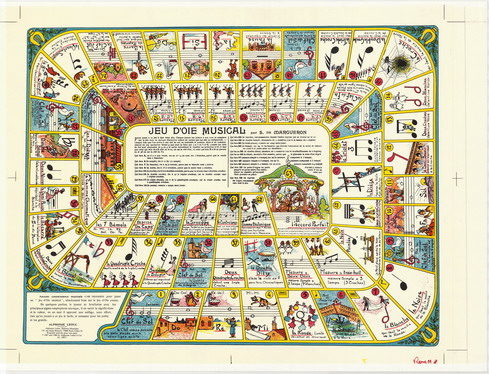 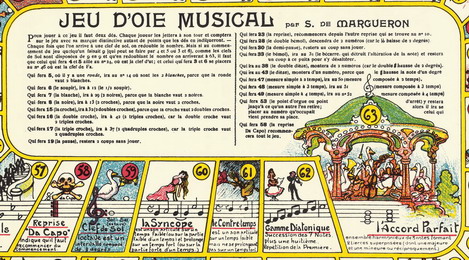 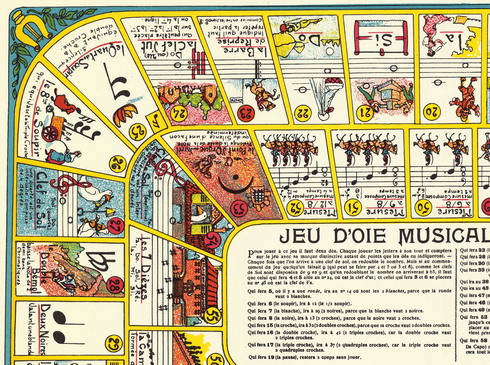  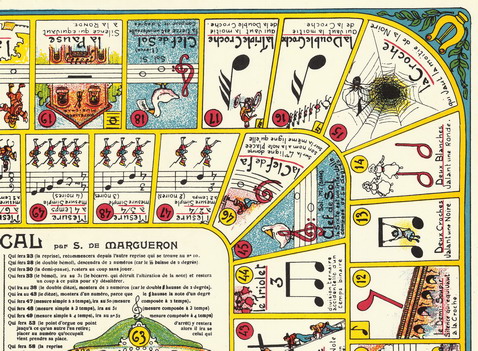 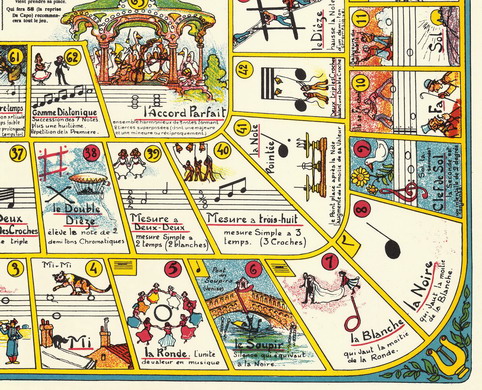 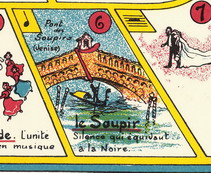 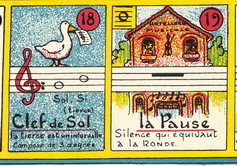 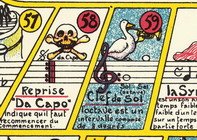 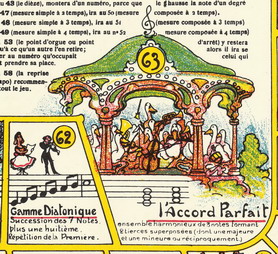 |
primo autore: | Non indicato |
| secondo autore: | Leduc Alphonse | |
| anno: | 1907 | |
| luogo: |
Francia-Parigi |
|
| periodo: | XX secolo (1°/4) | |
| percorso: | Percorso di 63 caselle numerate | |
| materiale: | carta incollata su cartone ripiegato in 2 | |
| dimensioni: | 400X530 | |
| stampa: | Cromolitografia | |
| luogo acquisto: | Francia-Parigi | |
| data acquisto: | 20-03-2018 | |
| dimensioni confezione: | ||
| numero caselle: | 63 | |
| categoria: | Spettacoli, teatro, cinema, musica, circo, televisione | |
| tipo di gioco: | Gioco oca variante | |
| editore: | Alphonse LEDUC, Emile LEDUC, P. Bertrand &C.ie, Editeurs de Musique 3 Rue de Grammont, Paris | |
| stampatore: | Alphonse LEDUC, Emile LEDUC, P. Bertrand &C.ie, Editeurs de Musique 3 Rue de Grammont, Paris | |
| proprietario: | Collezione A. Seville - L. Ciompi | |
| autore delle foto: | A. Seville - L. Ciompi | |
| numero di catalogo: | 548 | |
| descrizione: |
Gioco di 63 caselle, spirale, antiorario, centripeto che ha per tema la musica. Nelle caselle sono rappresentate le note e le caselle delle oche sono occupate dalla chiave di Sol. REGOLE: al centro. CASELLE: con didascalia. NOTA: Il gioco è stato ristampato nel 1986 (Editions Musicales Alphonse Leduc, 175 rue Saint-Honoré 75040 Parigi). REFERENZA 1 Game 21: The Musical Goose Game S. de Margueron. Jeu d'Oie Musical. Paris: Emile Leduc, P. Bertrand & cie., 1907. Chromolithograph on a two-panel folding board, 40 x 53 cm. Ref.: Ciompi/Seville 0548. Nothing seems to be known about the inventor, S. De Margueron, of this game to teach the rudiments of musical notation. Leduc and Bertrand were music publishers, based in the rue de Grammont in Paris. A note by the publisher, signed Alphonse Leduc, states that no musical knowledge is required to play, it being absolutely based on the Game of the Goose, and makes the bold claim that, after playing it, the player will understand - without effort - the principal signs used in music, their meaning and value, and the use of the sol-fa system. Each of the 63 numbered spaces contains a simple statement regarding some element of musical notation. Some of the spaces are numbered with an orange roundel, signifying that they are subject to one of the special rules set out in the center. The ”Sol” clefs (treble clefs) act as Goose spaces, in a single series at 9, 18, etc. Some of the special spaces have instructive rules peculiar to the game: for example, landing on space 5, where there is une ronde (a semibreve), the requirement is to go to space 14, where there are two blanches (minims) with a total length value equivalent to the ronde. Other special spaces cleverly draw on the hazards of classical Goose. Thus, at 6, the bridge is the Venetian Bridge of Sighs, in French Le Pont de Soupir, this representing a unit of rest (un soupir); and the instruction (as in the classic game) is to move to space 12, where a half-rest is represented. Space 19 (wait two turns) contains the musical sign for a pause. The death space, on 58 as usual, is represented (of course) by the da capo sign. The complexity of the rules is well thought out, so that various aspects of notation would indeed be learned. However, the game suffers as an educational tool because most of the spaces have no reinforcement from a special or instructive rule. Nevertheless, it is a witty production, with delicious iconography: the winning space (“perfect harmony”) at 63 shows a band playing merrily in an Art Nouveau bandstand, where all the musicians are depicted as geese. This pleasant game was not the first to attempt to teach musical notation: Le jeu d’Apollon, published in 1820 by Doisy and designed by N. Legros, ‘professeur de solfège’, is the earliest cited by D’Allemagne. However, a Nouveau jeu de musique designed by Mme. Leblanc and engraved by Bayard of St. Germain en Laye is in the education documentation archives (CRDP) of the Académie de Rouen and is dated as c. 1650. (Adrian Seville) Exhibitions: - "The Royal Game of the Goose four hundred years of printed Board Games". Exhibition at the Grolier Club, February 23 - May 14, 2016 (Prof. Adrian Seville). |
|
| bibliografia: |
1) SEVILLE, Adrian: "The Royal Game of the Goose four hundred years of printed Board Games". Catalogue of an Exhibition at the Grolier Club, February 23 - May 14, 2016, pag. 51. |
|
Vai alla ricerca giochi Vai all'elenco autori